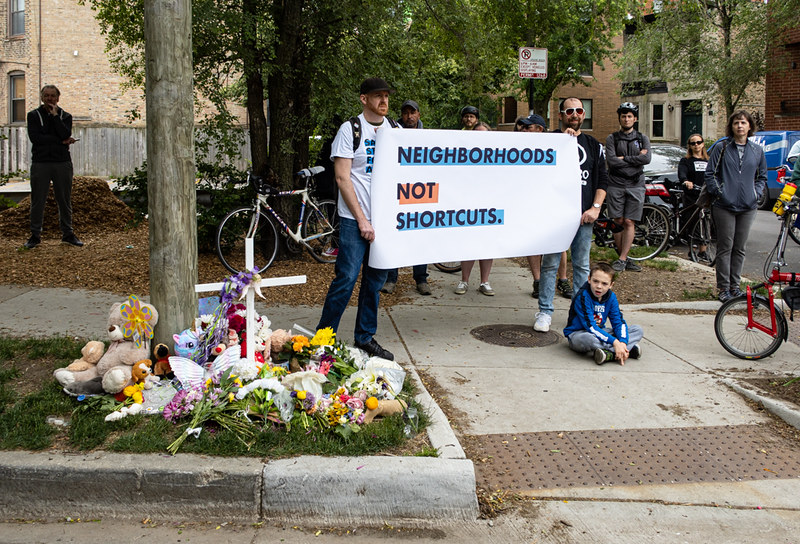Chicago is facing a traffic safety crisis. Crashes, serious injuries, and fatalities are on the rise. Vulnerable children and older adults are getting hit and killed while walking or biking just blocks from their home. People living in majority Black and Brown neighborhoods disproportionately bear the burden of these traffic crashes due to the prevalence of supersized streets and high-speed traffic.
The city clearly needs an all-hands-on-deck strategy to slow down cars and trucks, prevent crashes, and save lives.
Instead, Chicago’s City Council is considering raising the ticketing threshold for speed cameras from six miles per hour over the speed limit to 10 miles per hour over the speed limit. Speeding is the most common factor in serious and fatal crashes. Even small reductions in speed – just five miles per hour – greatly increase the likelihood of a victim surviving a crash.
Enforcement is an imperfect half-measure but raising the ticketing threshold during the current traffic safety crisis is irresponsible. City officials should instead strengthen the photo enforcement program to maximize its safety impact and better account for racial inequities in street design.
Cameras should be placed at the most dangerous locations and moved based on frequent data analysis. Revenue generated from cameras should be used to redesign dangerous streets and ultimately result in fewer tickets. High-crash streets in majority Black and Brown neighborhoods should be prioritized for safety improvements to ensure rates of speeding decline and residents in these areas are not overburdened with fines.
In addition, city officials should continue to review and strengthen the Clear Path Relief Pilot Program designed to support low-income residents burdened with vehicle-related debt.
What Chicago really needs is a citywide approach to redesign dangerous streets and add life-saving infrastructure that protects people when walking and biking and makes the street safer for everyone. Federal, state, and local transportation funds are available to immediately implement long-planned safety improvements on the most dangerous streets. What’s missing is leadership from elected and agency officials to get the work done before the next person gets hit and killed.

